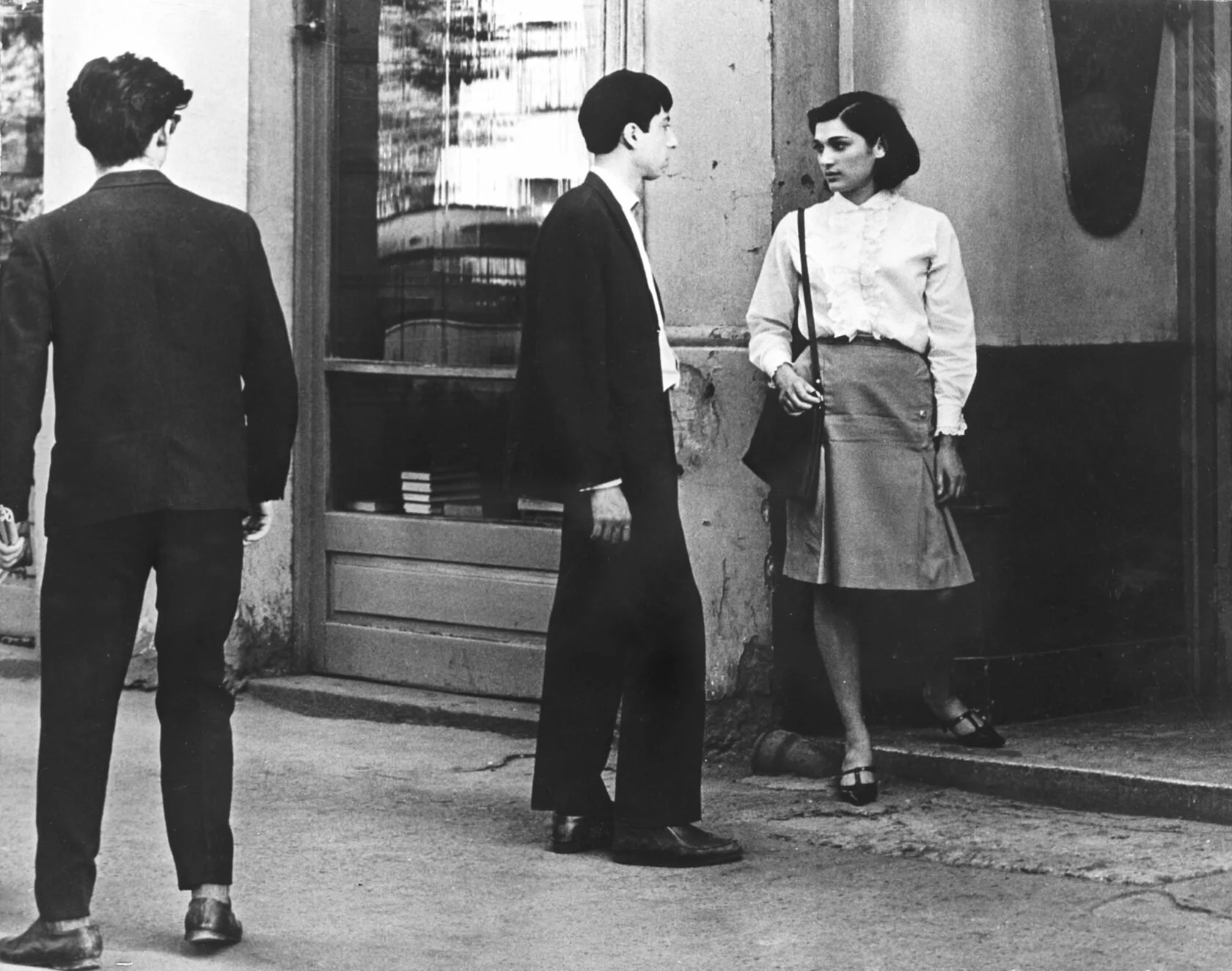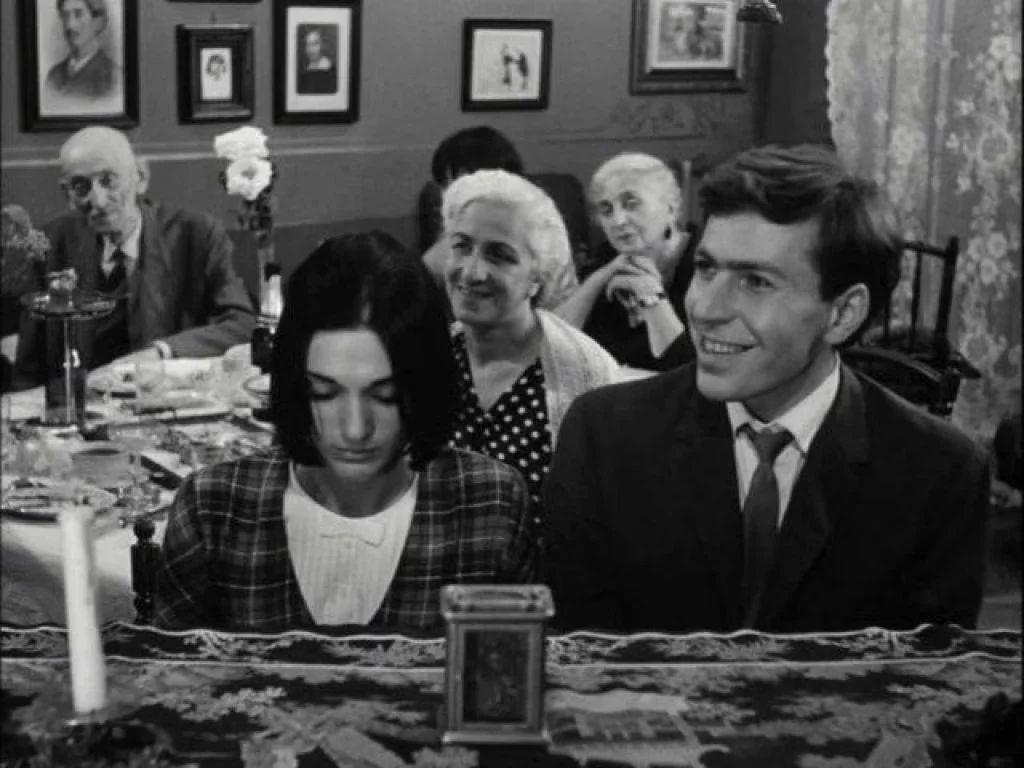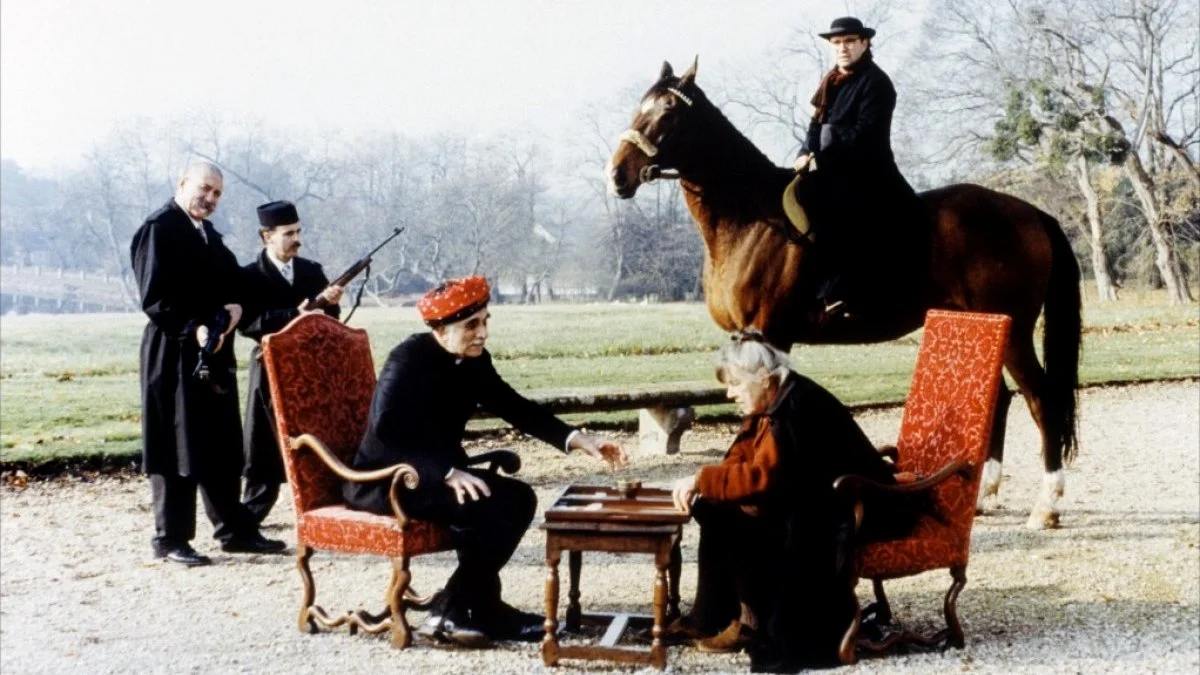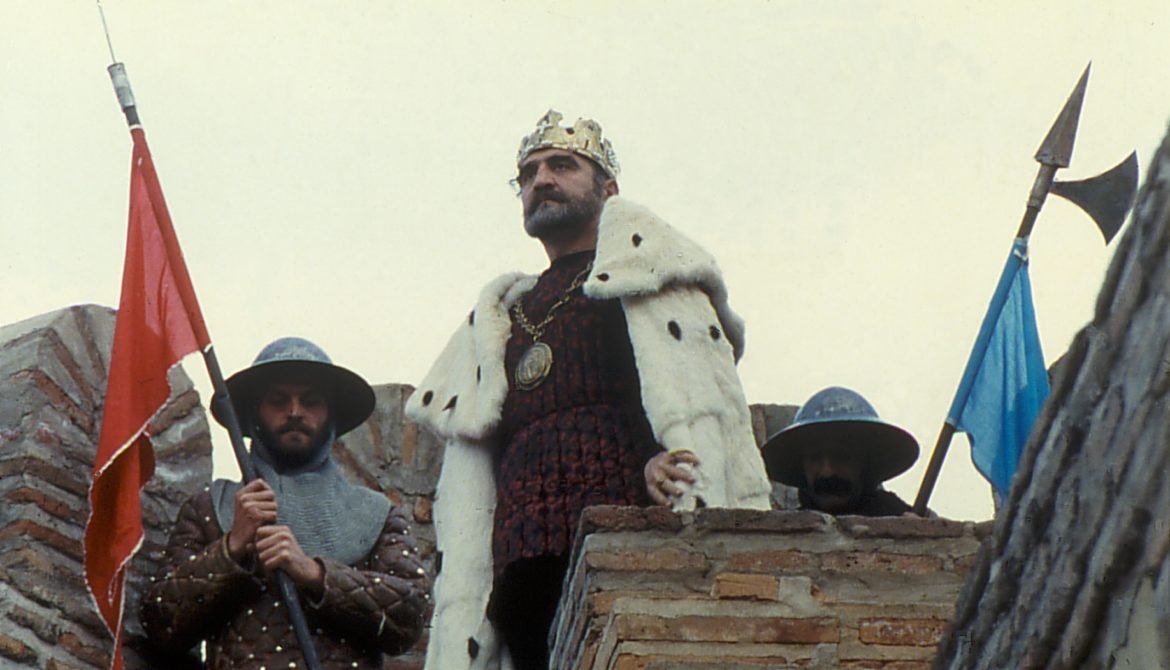The Butterflies Will All be Hunted
A nostalgic tribute to Otar Iosseliani
Elena Rubashevska
Perhaps, even 10 years ago the introduction to this article would not be necessary. In the cinema world, Iosseliani’s name were among those recognized and honored worldwide. Yet nowadays, when what used to be perceived as leading cinema drowns in the overwhelming amount of instant content; when time speeds up, leaving no room for observant films; when film critics become more distant from reality, trying in vain to prove the value of classics but finding themselves in a need of explaining who Otar Iosseliani was – it seems that the prophecy proclaimed in his films is coming to life.
Otar Iosseliani, Lido, 1989
Otar Iosseliani was a Georgian, Soviet, and French director, a representative and one of the leading figures of the “Soviet Renaissance” and after all, a proven citizen of the world. With his art, he expanded beyond Soviet, Georgian, and French limits. Herald of an old, ironic observer of the present, Otar Iosseliani was a singer of the disappearing era. As the year 2023 was waning, we learned about him passing away at the age of 89 in his hometown of Tbilisi in Georgia, where he moved back after many years in France to stay close to his family in times of trouble.
When one thinks of his death, somehow it does not prompt a depressing, but a poetical image: here old maestro, just like the character in one of his films, sits in a chair reading ancient papers. He doses off for a moment and is approached by a spirit from the past who lingered in the house. The spirit stretches his hand and silently puts a burning cigarette right next to a sleeping director. Disturbed by this gesture, the director wakes up, notices a cigarette, and by making a puff of the ethereal smoke, transits to eternity. What will happen to the cinema after his parting? What will happen to society? What will happen to the world?
Still from Falling Leaves, 1966.
Often we cannot help but wonder what the beloved directors of the past would say about the increasinf absurdity of the modern world. Too many of the leading figures of classic cinema passed away too early, but Otar Iosseliani was there to share his perspective, which, alas, was not an optimistic one. By nature, he was always rather skeptical about humanity. In his first feature film (Falling Leaves, 1966), a young hero collided with society; and this juxtaposition put him in front of a moral dilemma. Does he possess the organ that Iosseliani considered the most important in the human organism, conscience? According to the director, “We owe it to all generations who lived before us”. The choice the young man eventually made proves that such an organ cannot yet be called an atavism. This choice to go for what was morally correct was a form of personal protest against collective identity. The blurred line between good and evil was clearly visible to Iosseliani, and he manifested it through the behaviors of his characters.
Still from Pastorale, 1975.
That’s what all of films consisted of: not stories but behaviors. In every movie, an unobtrusive plot was barely felt on the margins – try to retell any of those films, and you will ll find it quite impossible. Take his last film shot in the Soviet Union, Pastorale, 1975. What were the characters' names? What were their intentions, or, speaking modern dramaturgy language, arches? What was the conflict? Eventually, you will l end up describing atmospheres, senses, barely perceptible, subtle ethical categories. Iosseliani was one of those who believed that film should not be told but watched: a statement that sounds rather old-school in the age where every twist and turn of the plot is carefully calculated. Iosseliani saw American cinema as a “big kindergarten that spoils taste.” He remained truthful to his authenticity up to the very end, pursuing his unique visual approach to the world.
Still from Once Upon a Time There Was a Singing Blackbird, 1970
This approach did not rely on garish, cheap tools, and tricks. The calm, distant, unintentionally critical manner of his camera managed to draw the viewer’s attention to small, presumably insignificant details of everyday life, which eventually make up the bigger picture of the world we live in. How do we behave as a viewer in the modern media world? Just like the character of Iosseliani’s renowned film Once Upon a Time There Was a Singing Blackbird, 1970, we are rushing through a multiplicity of content. Befuddled by the richness of selection, we try media delights one by one, unable to make a certain choice and savor it. Scared to miss out on life, we are superficially jumping from one TV show to another, from one gadget to another, and even from one country to another, unable to stop for a moment and register our disappearing ability to concentrate, think, and remain an integral human being capable of responsible, carefully considered actions. This overall life consumerism might not look that disastrous when it comes to changing gadgets; yet we become incapable of noticing how this rush forces us to give up on a holistic approach to bigger choices, such as political preferences, and even basic ethics in our increasingly divided society.
All three of the aforementioned films had trouble coming on screen in the Soviet Union. In each of them, the censorship discovered messages dangerous to socialis society: the multiple layers hidden beneath superficially harmless stories were disturbing and stirring, prompting us to ask uncomfortable questions and teaching a keen, critical approach to reality.
Still from The Butterfly Hunt, 1992
Iosseliani often stated that “Politics cannot be the goal of art”; however, while watching his films one can’t shake off the feeling that there is something iconoclastic behind his modest and slow-paced stories. Just after he had passed away, I rewatched the film he made after settling down in France, The Butterfly Hunt, 1992. Could one imagine such a film (unquestionably a masterpiece) passing the criteria of political correctness in the modern world? That remains doubtful. Iosseliani never compromised with his beliefs, artistic or political, and remained as critical towards changes in European society as he was towards Soviet ones. For him, these two worlds came from the same Judeo-Christian origin and thus operated with the same moral categories, as well as sharing the same flaws. He felt and predicted the civilizational switch and the unavoidable encounter with the Global East and Asia, which with their enthusiasm and cultural and economic pressure would challenge traditional European ways of living. In The Butterfly Hunt, the old French butler hastily cleans the floors after having swarming Japanese visitors. To him they appear ridiculous, taking multiple pictures of the old mansion, as if with no understanding of the rich culture, its traditions, and, after all, acceptable manners! But the owner of the mansion will soon die, and it will be sold to the impudent Japanese invaders. Who knows if even the spirits haunting the mansion would be able to stand such a trampling on the past? In the end, all butterflies will be hunted. The day will come, and the future generation will launch a hunt for the Japanese ones…
Iosseliani openly indulges nostalgia for the disappearing ephemeral world of past culture, be it France in The Butterfly Hunt or Africa in And Then There Was Light, 1989. For all countries, continents, and nations, he claims: the past was better! It was more real! It was more profound! Were people and their drawbacks different? By no means. And yet, every day we are losing something precious that constituted life as we knew it for centuries, something that served as a base for us when we had to face difficult choices. This indescribable something (that Iosseliani perfectly captured in his films) was perfectly noticeable in the director himself: his steady way of speaking, his ability to cite poems, his broad knowledge of multiple fields. Through his impressionistic spirit, poetic montage, and scattered semi-documentary texture he was leading a conversation with the past, logically continuing the tradition, which might be no more after his passing away. The grand generational dialogue is at risk of interruption. To whom will Iosseliani pass the contagious poetic worldview that he inherited from the great master of Ukrainian poetic cinema Alexandr Dovzhenko? “Culture is to know how to communicate,” Iosseliani used to say. But is there anyone to continue this dialogue? The director did not have much hope for a positive answer.
Still from Brigands-Chapter VII, 1996
Nevertheless, he shows us how the cosmic, not to say karmic, monologue, goes in a vicious circle in his next film, Brigands-Chapter VII, 1996. Epochs change, faces stay the same. Yet one more thing changes as well: the director’s perspective. Maintaining the same ironic worldview, it becomes considerably more bitter. This tendency will find its development in the next works, culminating in Winter Song, 2015, where explicit, ruthless violence will go hand in hand with slapstick and sarcastic exaggeration that giddily devaluate the tragedy. In the last Iosseliani’s film, the world is seen as a mere absurd theatre, a chaotic yet somehow self-regulating organism where modern intertwines with old-fashioned, cruelty turns to lyric, and altogether it is coming to an inevitable shabby end.
It is interesting that this last work of Iosseliani, being such a precise image of modern times, was neither glorified at major film festivals nor acclaimed by the majority of film critics. By the time the film was released, the idea of upcoming chaos started to be getting normalized in our heads, and anyone (much like a Trojan priestess Cassandra) prophesying a terrible end, was being marginalized, his warning voice drowning in the chorus of artificial tolerance and inclusivity. But it would be fair to point out that in his increasingly gloomy films, Iosseliani stubbornly acts as an observer, not offering us an answer or even a direction that might be able to salvage humanity. In the world, as seen by him, we passed the point of no return, and all that is left is to watch dilapidated civilization falling apart.
Still from Winter Song, 2015
If I had a chance to talk to Otar Iosseliani, I would ask one question. I would refer to the episode of his life when he just started higher education in mathematics, later giving up on it after understanding that technical knowledge can be used to harm humanity. Isn’t that what is happening with the media in the 21st century? They are, arguably to a bigger extent, used to fuel hatred, disseminate fear, promote intolerance. Then what do we do as artists? Where do we stand? How do we contribute to the peace with our art?
Though it seems that I am asking more than one question, they can be all narrowed down to the existential one: Where is that line between good and bad that was once so easily defined by Iosseliani in Falling Leaves, and now appears hardly recognizable?
Elena Rubashevska is a journalist and film festival programmer.








